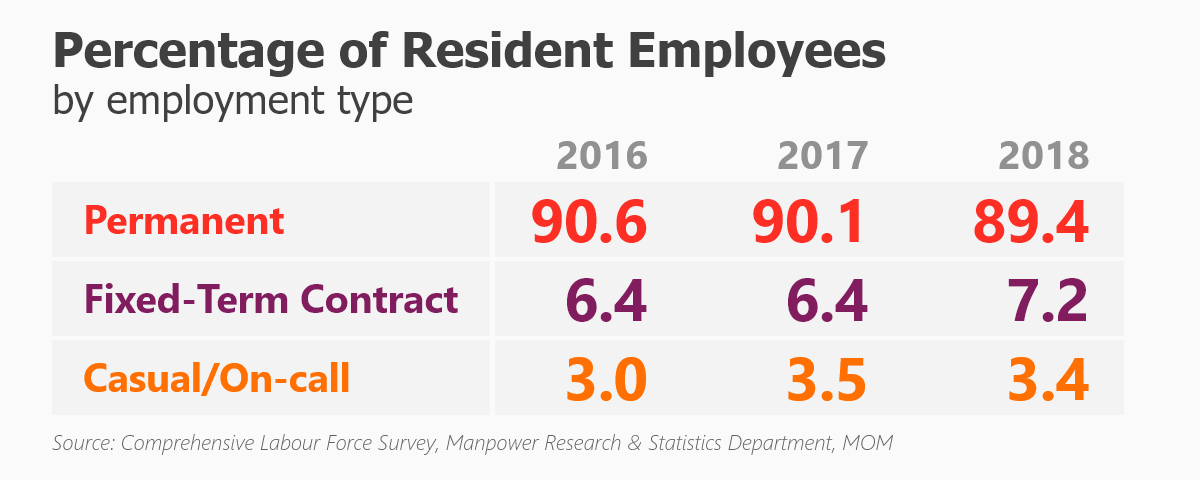It’s Not All About The Gig Economy
With the rise of Grab and Uber, it’s no surprise that the ‘gig economy’ has gained traction in Singapore. People are taking on less conventional forms of employment as compared to the past. While this has made us no strangers to terms like ‘permanent job’ and ‘freelancer’, two other job types seemed to have taken a back seat.
That’s right, we’re talking about non-permanent employment such as fixed-term contract and casual/on-call jobs. But before we jump into the details, let’s first pin down the definitions:
| |
i. | Fixed-term Contracts |
|---|
| | | As the name suggests, it’s an agreed upon period (e.g. 6 months, 1 year) where the employee will be working for the employer. Once the agreed period is up, the contract will either be terminated or renewed. |
|---|
| |
ii. | Casual/On-call Work |
|---|
| | | Casual/on-call employees refer to those employed on ad-hoc basis, as and when the company requires additional manpower. A good example of on-call work is food delivery drivers/riders. |
|---|
Now, you must be thinking: “Why should I care about non-permanent employment?”
This is because freelancing isn’t the only form of employment that comes with flexibility. As each individual has different circumstances, having a non-permanent job might suit one’s needs better.
For fixed-term contract employees, you can have greater control in scheduling work around other commitments. You are also entitled to leave benefits after working for a few months in the company. Meanwhile, on-call work offers even more working flexibility, but with less income stability and fewer benefits as compared to permanent and term contract staff.
For those who are looking for permanent jobs, knowing about the non-permanent employment landscape can be useful too. While companies may offer fixed-term contracts because the job is available only for that specific project, some may offer term contracts to see if there’s a possibility for conversion to a permanent role. This way, companies can strategically adjust their manpower needs according to business demands.
Now that we’ve gotten your interest, let’s get into the figures.
Did you know that non-permanent employment is on the rise?

Over the years, permanent workers have generally been growing, but in 2017 and 2018, their numbers declined for two years in a row. Following the decrease in permanent roles, the term contract and casual/on-call roles saw an increase.
The increase of resident employees on term contracts was seen across industries such as info-comms, professional services, and financial & insurance services. One thing to note is that these industries also faced relatively high incidence of retrenchments due to restructuring in recent years.
The restructuring could have prompted companies to be more cautious, which led to the hiring term contract workers instead of permanent workers in order to meet their business goals and manpower needs.

With on-going economic restructuring, companies have shown more inclination toward adopting a near-term outlook for their resource requirements as much of the increase in contract employees were those on one-year contracts. In fact, looking at the above table, term contracts of 1 year had the highest increase: 0.4%.
What about their income?
You’ll be glad to know that employees on term contracts of a year and more than a year have comparable income to their permanent counterparts. In addition, their income grew in pace as well. However, ones who were on a shorter-term contract of under a year had substantially lower income.

As mentioned before, casual/on-call work tend to offer a wider amount of flexibility than permanent or term contract roles, but it comes with lesser income stability.
So where does this leave us? It’s cliché, but only time will tell whether there will be a greater growth in non-permanent work in Singapore. And we’ll definitely be the first to know about it (in statistics and figures, that is).
Want to learn more about Singapore’s labour force? Find out more through our
full report.
Released on: 09 May 2019